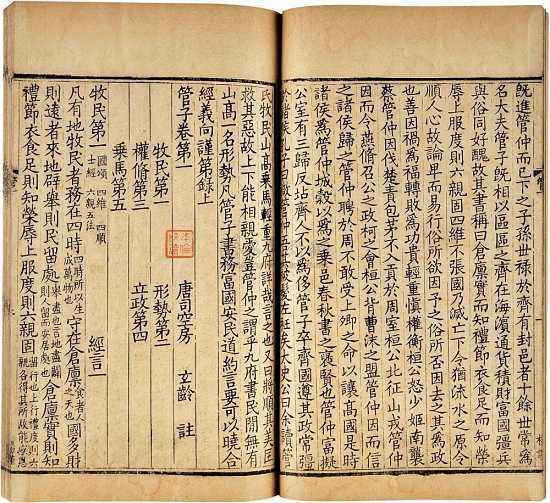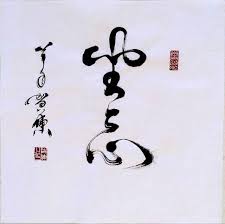Meditation comprises all those practices of training attention and consciousness through different methods and, very often, of regulating breathing, whose aim is the development of a mental state of calm and emotional stability.
Although contemplation is a state that can occur naturally in humans, meditation involves some kind of technique designed with a specific goal.
Historical antecedents:
Many philosophical-religious traditions possess contemplative practices that we can qualify as meditation. Surely, shamanic traditions have also sometimes made use of similar techniques, although other times their practice consisted of altering consciousness, either through natural drugs or by other means, such as the subjection of the brain to the absence of sensory stimuli.

Since meditation is not a material product of culture, and therefore leaves no physical evidence traceable by sciences such as archaeology, we depend, to discern its origin, on written texts or other intentional human representations.
Among these evidences, the oldest available come from India, although different meditative techniques may have emerged in many places independently.
In India, meditation has been practiced since time immemorial, and all indigenous religions include some form of meditation. Mural paintings dating from between 5000 and 3500 B.C. depicting people sitting in meditation have been found there.
With regard to written records, the oldest mentions of meditation are found in the Vedas (1500-1200 B.C.), the texts that form the basis of Vedic religion and Hinduism.
Subsequently, Buddhism, which appeared in the 6th century B.C., incorporated the practice of meditation as an essential pillar of the Buddha's teaching.
Origins of meditation in China
The exact date on which Buddhism arrived in China is not known. Although some legends attribute to their arrival a very early date, most historians opt for the 1st century of our era as the most likely date.
However, in times when Buddhism began to spread in China, some indigenous currents had already developed their own meditation practices, as evidenced by written texts. These currents are sometimes referred to as proto-Taoist because, on the one hand, they precede the formation of Taoism as a religion and, on the other hand, influenced its subsequent development.
The first Chinese references to meditation date from the 5th century B.C., a very short time after the emergence of Buddhism in India. We do not know whether India's meditative techniques preceding the emergence of Buddhism could have reached China and influenced Taoist practices, but it seems unlikely, and it is commonly accepted that Hindu ideas only reached China through Buddhism. The reason of this is that, in order to make long-distance travel possible and ensure the safety of routes along the way, stable regimes were necessary, and this would not be possible until the Hàn 漢 dynasty. Therefore, in the absence of evidence to the contrary, we can consider the aforementioned proto-Taoist practices as indigenous.
Xíngqì 行氣
A jade artifact dating back to the Warring States period (戰國時代 Zhànguó Shídài, 475-221 B.C.), with a rhymed inscription entitled xíngqì 行氣, could be the first written reference to meditation or practices of breath regulation in China.

Carbon copy of the inscription.
Xíngqì refers to the "circulation of qì", which can be understood in its meaning of "vital breath".
行氣
xíng qì
Circulating the vital breath
深則蓄
shēn zé xù
When [qì] deepens, it is stored;
蓄則伸
xù zé shēn
when it is stored, it expands;
伸則下
shēn zé xià
when it expangs, it descends;
下則定
xià zé dìng
when it descends, it becomes stable;
定則固
dìng zé gù
when it becomes stable, it is regulated;
固則萌
gù zé méng
when it is regulated, it sprouts;
萌則長
méng zé cháng
when it sprouts, grows;
長則退
cháng zé tuì
when it grows, it recedes;
則天
zé tiān
when it recedes, it becomes natural;
天機舂在上
tiān jī chōng zài shàng
the misteries of Heaven reveal in the ascension;
地機舂在下
dì jī chōng zài xià
the secrets of Earth reveal in descent;
順則生
shùn zé shēng
by yielding, it lives;
逆則死
nì zé sǐ
by opposition, it dies.
It is not clear that this inscription refers to a static practice. It could also be a practice of qì gōng 氣功 in motion. Because Chinese lacks verbal times, the text can be understood either as an instruction of what needs to be done ("make deeper -breathing-, and then expand it"), or as a description of what happens naturally in the body when one sits in meditation ("when it deepens, it expands", or "by becoming deeper, expands").
The first clear references to meditation in China are found in the Guǎn Zǐ 管子, a great compendium of political-philosophical texts, named after a philosopher from the 7th century B.C. (Guǎn Zhòng 管仲). However, the authorship of these texts does not correspond to him, but to a group of later anonymous writers.
The dating of the Guǎn Zǐ is a matter for which historians fail to agree, although the most accepted opinion is that most of these texts were written in the 5th and 4th centuries B.C., and compiled under the same title around 300 B.C., and material could have been added later until 26 B.C.
In the Guǎn Zǐ we find several chapters dedicated to the description of meditative practices. Among these, the most important is the Nèiyè 內業 ("Inward Training"), which is also probably the oldest, and from which the rest derive. The Nèiyè can be understood as a meditation manual, which includes the earliest references to breath control and discusses its physiological bases.

The Nèiyè also contains the first references to the cultivation of jīng-qì-shén 精氣神 (essence - vital energy - spirit), which would become fundamental concepts of Taoist internal alchemy (內丹術 nèi dān shù) and traditional Chinese Medicine.
In addition to the Guǎn Zǐ, fragments are also found in the Dào Dé Jīng 道德經 that can be interpreted as references to meditation or contemplative practices, although these references are somewhat obscure inferences, which derive from the emphasis on concepts such as "voidness" (虛 xū) or "stillness" (靜 jìng).
In the Zhuāngzǐ 莊子, another of the most important Taoist texts, references appear to a practice called xīnzhāi 心齋 ("fasting the mind") or zuòwàng 坐忘 ("sitting in oblivion"), in fictional dialogues between Confucius (孔子 Kǒng Zǐ) and his disciple Yán Huí 顏回.
Zuòwàng
In the Zhuāngzǐ, it is Yán Huí, disciple of Confucius, who instructs the later in the practice of zuòwàng:
顏回說:“我坐忘了。”
Yán Huí said: “I sat and forgot”.
孔子驚奇地說:“什麼叫坐忘?”
Confucius asked: “What does 'sitting and forgetting' mean?”
顏回說:“不著意於 自己的肢體,放棄自己的視聽,超脫形體,摒除心智,與萬物融通一體,這 就是‘坐忘’。”
Yán Huí said: “Abandoning the body, getting rid of the sensed, leaving my material form, abandoning the mind, and becoming One with everything, that is ‘sitting and forgetting’.”

The concept of zuòwàng is also found in the Huáinánzǐ 淮南子 and would be widely developed in the future in texts such as the Zuòwànglùn 坐忘論 from the Táng 唐 dynasty. At this time, this Taoist practice already reflects a clear influence of the Buddhism of the Tiāntāi 天台 school.
At the end of the 1st century A.D., the concept of shǒu yī 守一, "guarding the One", appears, a type of meditation comprising visualization, which is associated with internal alchemy and Taoist magic and its practices for achieving longevity.
Since the introduction of Buddhism in China, Taoist practices began to introduce concepts of Buddhist practice and merge with it.
In the 6th century, Bodhidharma (達摩 Dámó) introduced Chán 禪 in China, a branch of Buddhism that makes meditation its most important pillar. Chán meditation is known as zuòchán 坐禪 ("sitting in contemplation"). But even within Chán Buddhism, several schools have taught different forms of meditation, such as the Kànhuà 看話 system and the "Silent Illumination" of the Cáodòng 曹洞 school.
Since this time and faced with the competition between Taoism and Buddhism for imperial patronage, both religions adopt practices from each other, in a process of unparalleled syncretism that has significantly influenced the life and thought of the Chinese.

2 thoughts on “The Origins of Meditation in China”
The document that Hindu nationalists use to claim authorship of the meditation is a intentional mistranslation that actually means contemplation, and it doesn’t even describe the practice of meditation.
The original religions of the Indian subcontinent consisted only of idolatry to various gods, while in China this type of practice and philosophy predates Buddhism and Taoism.
These shamanic practices of altered states of consciousness seem to exist only in peoples who had some connection with Siberia. Particularly I believe that Taoism is descended from shamanism.
I recommend you be careful with claims made by Hindu extremists:
https://talesoftimesforgotten.com/2021/06/01/is-yoga-really-ancient/
https://scroll.in/article/735805/fact-check-yoga-as-we-know-it-was-invented-less-than-100-years-ago
http://www.badarchaeology.com/in-the-service-of-politics/ram-setu-ram-sethu/
https://www.science.org/doi/10.1126/science.363.6428.679
https://en.wikipedia.org/wiki/Vaim%C4%81nika_Sh%C4%81stra#Controversy
https://en.wikipedia.org/wiki/Bharat_Aggarwal
They even claim that literally all modern science was invented or was already known by “ancient Hindus”.
Thank you for your insights!